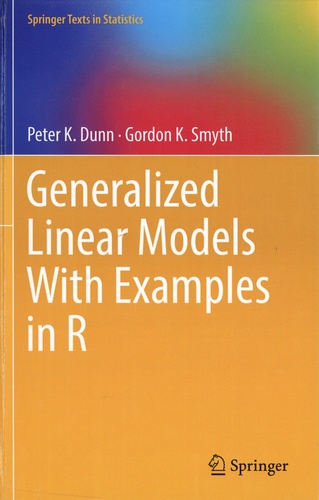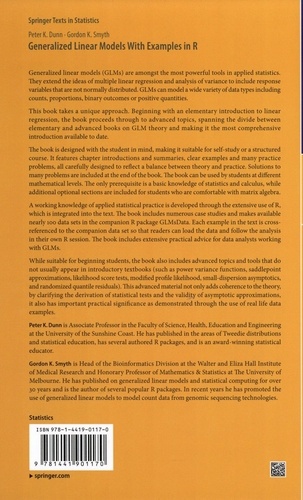En cours de chargement...
Generalized linear models (GLMs) are amongst the most powerful tools in applied statistics. They extend the ideas of multiple linear regression and analysis of variance to include response variables that are not normally distributed. GLMs can model a wide variety of data types including counts, proportions, binary outcomes or positive quantities. This book takes a unique approach. Beginning with an elementary introduction to linear regression, the book proceeds through to advanced topics, spanning the divide between elementary and advanced books on GLM theory and making it the most comprehensive introduction available to date.
The book is designed with the student in mind, making it suitable for self-study or a structured course. It features chapter introductions and summaries, clear examples and many practice problems, all carefully designed to reflect a balance between theory and practice. Solutions to many problems are included at the end of the book. The book can be used by students at different mathematical levels.
The only prerequisite is a basic knowledge of statistics and calculus, while additional optional sections are included for students who are comfortable with matrix algebra. A working knowledge of applied statistical practice is developed through the extensive use of R, which is integrated into the text. The book includes numerous case studies and makes available nearly son data sets in the companion R package GLMsData.
Each example in the text is cross-referenced to the companion data set so that readers can load the data and follow the analysis in their own R session. The book includes extensive practical advice for data analysts working with GLMs. While suitable for beginning students, the book also includes advanced topics and tools that do not usually appear in introductory textbooks (such as power variance functions, saddlepoint approximations, likelihood score tests, modified profile likelihood, small-dispersion asymptotics, and randomized quartile residuals).
This advanced material not only adds coherence to the theory, by clarifying the derivation of statistical tests and the validity of asymptotic approximations, it also has important practical significance as demonstrated through the use of real life data examples.








